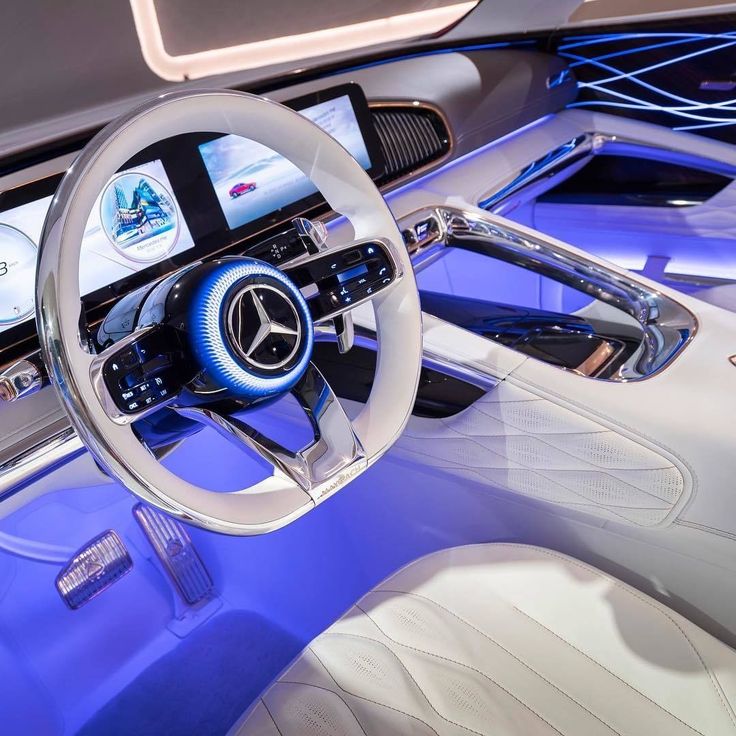Porsche's Struggle: Balancing Ferrari's Sportiness And Mercedes' Luxury In A Trade War Climate

Table of Contents
The Tightrope Walk: Balancing Sportiness and Luxury
Porsche's challenge is significant: it must simultaneously cater to those seeking the raw performance associated with Ferrari and those desiring the unparalleled luxury offered by Mercedes-Benz. This delicate balancing act requires shrewd strategy and innovative execution.
Ferrari's Aggressive Performance
Ferrari has cultivated a powerful brand image centered around raw speed and racing heritage. Their marketing consistently emphasizes exhilarating performance.
- Models: The Ferrari 488 Pista, SF90 Stradale, and the iconic Ferrari 812 Superfast all represent the pinnacle of high-performance sports cars.
- Marketing: Ferrari's marketing campaigns often feature Formula 1 racing, highlighting their technological prowess and competitive spirit. This creates a perception of exclusivity and unparalleled performance.
- Consumer Perception: This focus on pure performance leaves little room for compromise, attracting customers prioritizing ultimate speed and driving experience above all else. This directly impacts Porsche, which needs to offer comparable performance while incorporating its luxury attributes.
Mercedes-Benz's Unwavering Luxury
Mercedes-Benz, on the other hand, reigns supreme in the luxury automotive segment. Their vehicles are synonymous with opulence, cutting-edge technology, and unparalleled comfort.
- Features: Mercedes-Benz models boast advanced driver-assistance systems, luxurious interiors crafted from premium materials, and innovative infotainment systems.
- Technological Advancements: Mercedes-Benz consistently pushes the boundaries of automotive technology, incorporating features like autonomous driving capabilities and advanced connectivity solutions.
- Marketing: Their marketing emphasizes comfort, sophistication, and cutting-edge technology, appealing to customers who value luxury and prestige. This presents a significant challenge for Porsche, which must offer a comparable level of luxury without compromising its performance identity.
Porsche's Balancing Act
Porsche cleverly navigates this competitive landscape by offering a compelling blend of sportiness and luxury. They don't fully embrace either extreme, instead carving a niche for themselves.
- Models: The Porsche 911, with its various trims, embodies this balance, offering both exhilarating performance and a refined, luxurious interior. The Cayenne SUV also balances practicality with sportiness and luxury features.
- Marketing Campaigns: Porsche's marketing campaigns showcase both the performance capabilities and the luxurious aspects of their vehicles, appealing to a broader range of customers.
- Success: Porsche's success lies in its ability to effectively communicate this unique blend, attracting customers who value both performance and luxury. This requires a sophisticated understanding of its target demographic and a continual adaptation to market trends.
The Impact of Global Trade Wars
Global trade wars and associated tariffs significantly impact Porsche's operations and market position. These challenges force strategic adaptations and impact both production and pricing.
Tariffs and Supply Chain Disruptions
Trade disputes lead to increased tariffs on imported components, impacting Porsche's manufacturing costs. Supply chain disruptions caused by trade tensions further complicate operations.
- Impact on Production: Increased tariffs on imported parts can significantly increase production costs, potentially squeezing profit margins.
- Component Sourcing: Porsche, like other automakers, relies on a global supply chain. Trade wars disrupt this network, causing delays and increasing uncertainty.
- Pricing Strategies: Porsche may need to adjust its pricing strategies to offset increased costs, potentially impacting competitiveness.
Shifting Market Dynamics
Trade wars affect consumer spending and purchasing power globally. These shifts in market dynamics further complicate Porsche's strategy.
- Consumer Behavior: Economic uncertainty caused by trade wars can lead to decreased consumer confidence and reduced spending on luxury goods.
- Market Share: Fluctuations in market demand can impact Porsche's market share and overall sales figures. Strong competition adds another layer of complexity.
- Global Markets: The impact of trade wars varies across different global markets, requiring Porsche to adapt its strategies regionally.
Future Prospects for Porsche
To overcome these challenges, Porsche is actively investing in innovation and diversification.
Innovation and Electrification
Porsche's significant investment in electric vehicles (EVs) represents a key strategy for future growth and sustainability.
- EV Models: The Taycan, Porsche's first fully electric vehicle, demonstrates their commitment to electromobility. Further advancements and model introductions are expected.
- Technological Advancements: Porsche is pushing the boundaries of EV technology, aiming for high performance and extended range.
- Sustainable Mobility: Porsche's focus on sustainable mobility positions the brand for long-term success in a changing automotive landscape.
Brand Evolution and Diversification
To navigate the complex challenges ahead, Porsche may need to further adapt its brand identity and product offerings.
- Market Expansion: Exploring new markets and customer segments could help mitigate risks associated with economic downturns in specific regions.
- New Product Lines: Introducing new vehicle categories or expanding existing lines could broaden the brand's appeal and increase revenue streams.
- Brand Image Adjustments: Fine-tuning the brand image to emphasize specific aspects, like sustainability or technological leadership, might attract new customer segments.
Conclusion
Porsche's struggle is multifaceted, involving a delicate balance between sportiness and luxury, compounded by the unpredictable effects of global trade wars. The company's strategic investments in electric vehicles and its focus on innovation represent crucial steps towards navigating these challenges. Its future success hinges on adapting to evolving market dynamics and maintaining its unique position in the luxury sports car segment. What are your thoughts on Porsche's struggle to maintain its unique position? Share your opinions in the comments below!

Featured Posts
-
 I Pretended To Be A Missing Girl A Viral Reddit Story And Its Movie Adaptation Starring Sydney Sweeney
May 21, 2025
I Pretended To Be A Missing Girl A Viral Reddit Story And Its Movie Adaptation Starring Sydney Sweeney
May 21, 2025 -
 Ftv Lives Hell Of A Run The Good The Bad And The Ugly
May 21, 2025
Ftv Lives Hell Of A Run The Good The Bad And The Ugly
May 21, 2025 -
 The Goldbergs The Shows Impact On Pop Culture And Television
May 21, 2025
The Goldbergs The Shows Impact On Pop Culture And Television
May 21, 2025 -
 The Goldbergs A Comprehensive Guide To Every Season
May 21, 2025
The Goldbergs A Comprehensive Guide To Every Season
May 21, 2025 -
 Kanali Mi Ukrayina 5 Kanal 1 1 Pryamiy Inter Ictv Noviy Kanal Stb Up Ta Nv Ofitsiyne Pidtverdzhennya Statusu
May 21, 2025
Kanali Mi Ukrayina 5 Kanal 1 1 Pryamiy Inter Ictv Noviy Kanal Stb Up Ta Nv Ofitsiyne Pidtverdzhennya Statusu
May 21, 2025
Latest Posts
-
 O Baggelis Giakoymakis Mia Ypenthymisi Gia Tin Katapolemisi Toy Bullying
May 21, 2025
O Baggelis Giakoymakis Mia Ypenthymisi Gia Tin Katapolemisi Toy Bullying
May 21, 2025 -
 Iatrikes Efimeries Patras Savvatokyriako
May 21, 2025
Iatrikes Efimeries Patras Savvatokyriako
May 21, 2025 -
 I Tragodia Toy Baggeli Giakoymaki Mia Klironomia Kata Toy Ekfovismoy
May 21, 2025
I Tragodia Toy Baggeli Giakoymaki Mia Klironomia Kata Toy Ekfovismoy
May 21, 2025 -
 Efimeries Iatron Patras Savvatokyriako
May 21, 2025
Efimeries Iatron Patras Savvatokyriako
May 21, 2025 -
 Giorgos Giakoumakis Diminished Mls Transfer Value A Detailed Analysis
May 21, 2025
Giorgos Giakoumakis Diminished Mls Transfer Value A Detailed Analysis
May 21, 2025
